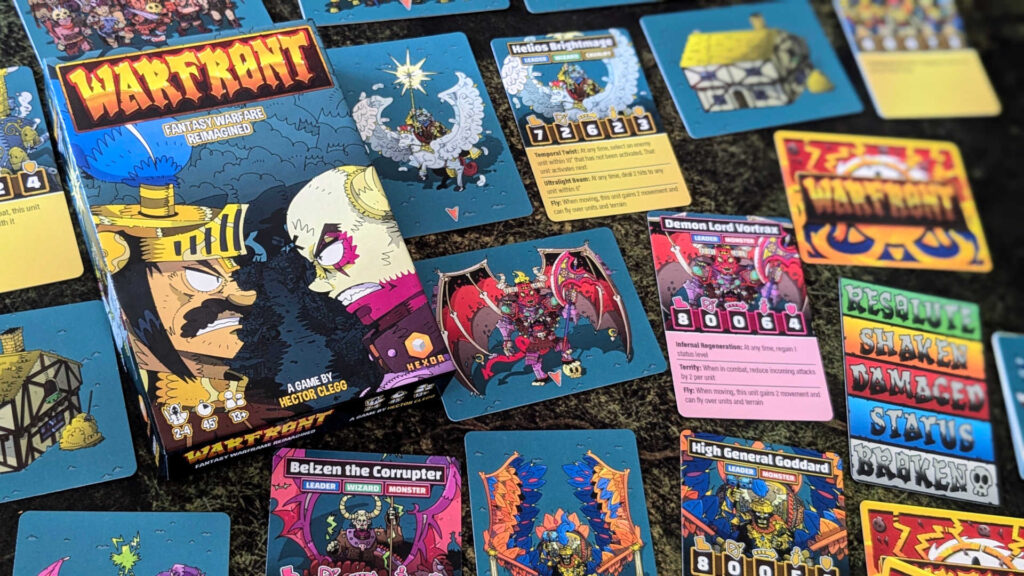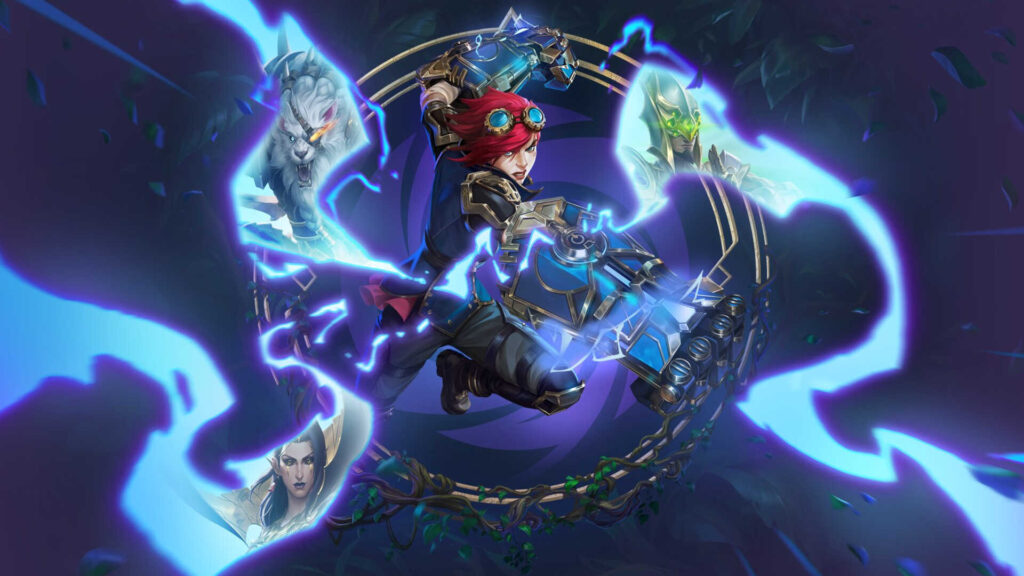Here at Card Gamer, we like to indulge in plenty of different types of tabletop gaming; along with board games and role playing games, we’ve also found ourselves getting involved with miniatures-based wargaming too. There is a pretty high barrier to entry when it comes to the latter; miniatures aren’t cheap, and the table space needed to play a full scale game of, for example, Warhammer, can be pretty prohibitive. Then of course, there’s the need to paint your miniatures; though an addictive and compelling part of the hobby, it’s another layer of expense and hugely time consuming, let alone a skill that isn’t learned overnight. So how can you scratch that wargame itch without having to lay out hundreds of dollars or more, and countless hours, on putting together a massive plastic fighting force? There may just be an answer on the horizon, in the form of Warfront; given that, here at Card Gamer, we’re always keen to stretch the definition of what makes a card game, we were keen to check it out.
Table of Contents
ToggleWhat Is Warfront?
Aiming to be a tabletop wargame without the need for miniatures, Warfront boils the experience down into a deck or two of cards. Of course, you’ll still use mainstays of the genre, such as dice and measuring tools such as rulers, but the units of each army themselves, along with stats and damage, are all represented by cards.
It’s not the first game to attempt to make miniatures-style wargaming more compact and cost effective in this way (one game I’m familiar with, 2005 title Battleground: Fantasy Warfare pulls off a similar trick), but Warfront almost certainly does the best job of making the genre feel more accessible in terms of its streamlined mechanics, along with an appealingly colorful, comic book-style aesthetic.
How to Play Warfront
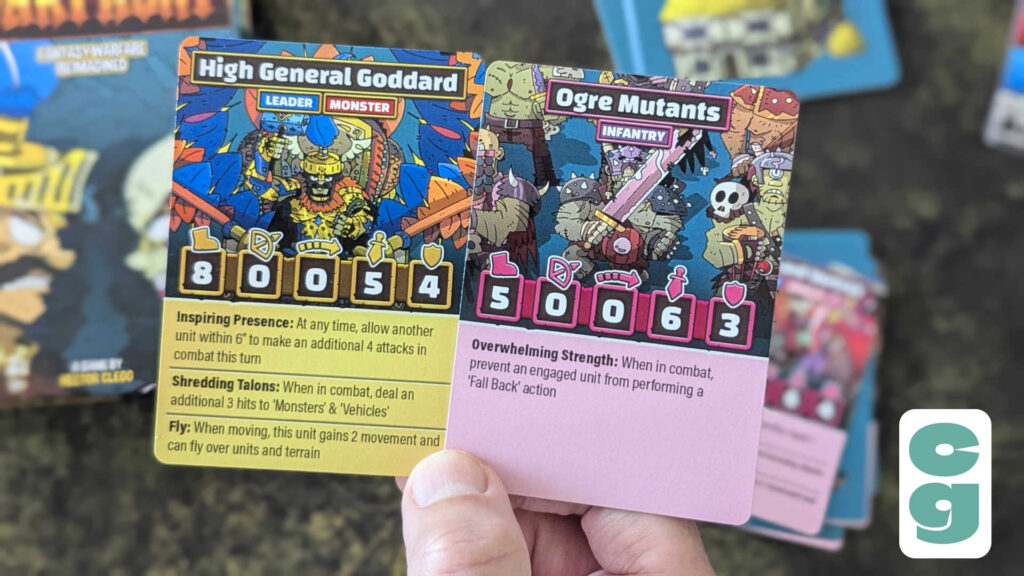
You’ll first put together an army using a points system, with each player usually given 60 points with which to assemble their forces. At least 1, and up to 2, Leader cards are chosen, and the balance of the points are spent on other units. Each card has its own corresponding stat card; these show details of their movement, shooting dice, range, attack number and defense, along with other abilities, their name and keywords.
A play area is established (a tabletop of around 36″x24″ is recommended, but any open tabletop space you have should work fine), terrain cards are placed and then players take turns placing their army units face down on their edge of the battlefield.
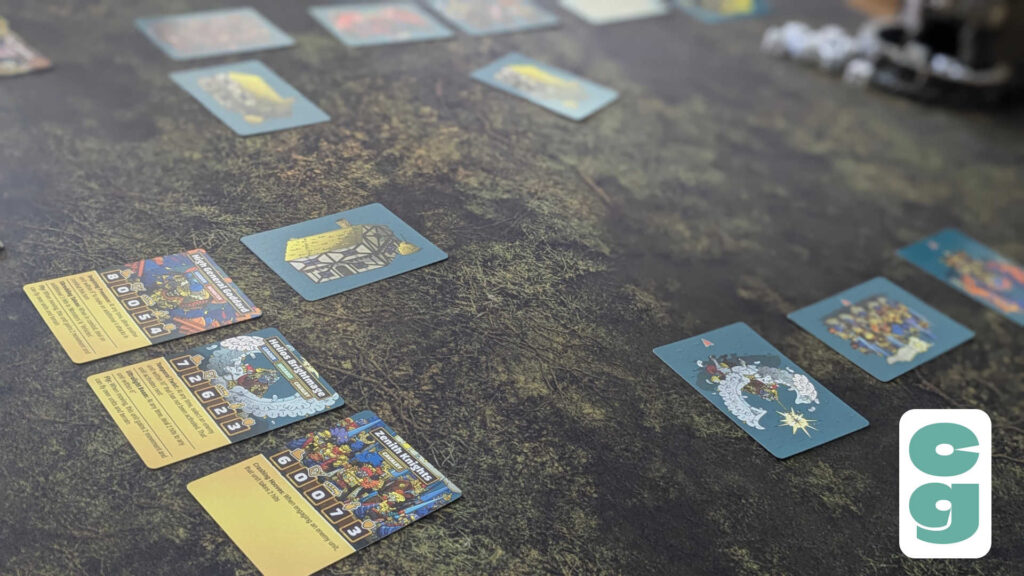
On each turn, players will roll the dice to see who takes the first activation, then at the start of each new turn (once all units have been activated on each side), players roll to see who takes the first activation again.
There are four phases to each turn, taken in order: Activation, Consolidation, Combat and Consolidation once more.
Activation sees units able to move (up to the distance, in inches, shown as their movement value, able to pass through friendly units, but not enemy units or terrain) and then shoot if they’re able, following range and line of sight rules. Broken units are removed from the battlefield during Consolidation; if they’re broken during the previous phase, they can still act as normal before being removed in the Consolidation phase. The Combat phase sees players attacking and defending with any units that are Engaged; that is, if their card is in contact with an enemy unit. Once this phase is fully resolved, Consolidation happens once more, and the next turn then begins.
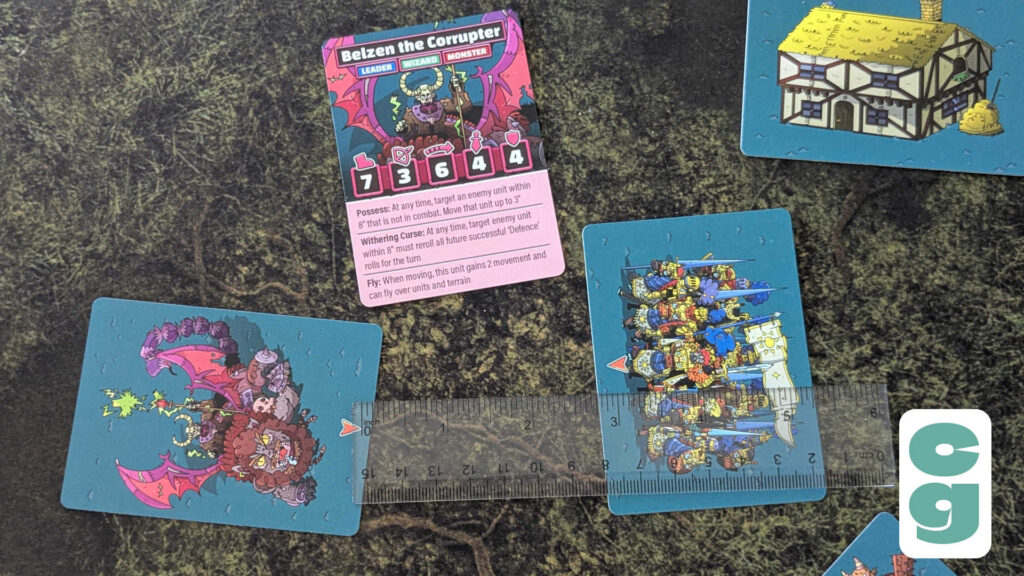
Combat is very straightforward, but slightly different depending on whether it’s a ranged or melee attack. Shooting sees players rolling the number of dice shown as their Shooting value, with hits being any 4+ results. The defender can then roll a die per hit, with any hits negated if they roll equal to or below their unit’s Defense value. There are penalties (a reduction in the number of dice rolled by the attacker) for line of sight and terrain obstructions too.
If Engaged (that is, aligned with another unit, either partially or fully alongside their card), units cannot shoot or be targeted by Shooting, and the number of attack dice rolled depends on whether or not units are in full or partial contact. Otherwise, players roll the number of dice equal to their Attack value, succeeding on any rolls of 4+. Units can take three hits before they’re Broken, and as mentioned above, Broken units are removed during the next Consolidation phase.
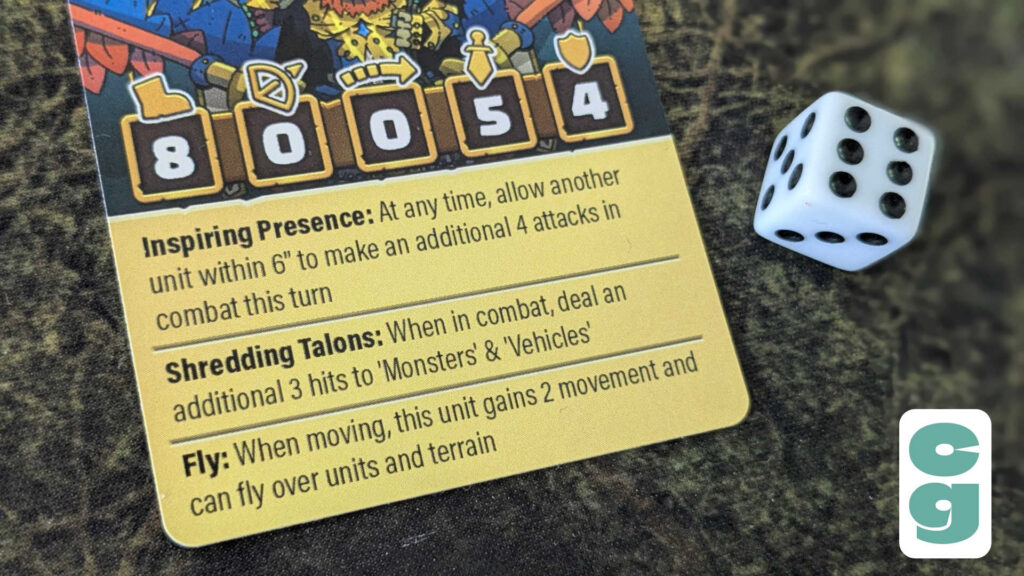
Any dice which roll a 6 generate Glory Points. Each player starts with 3 Glory Points, 1 point is earned per rolled 6, and units may spend Glory Points on standard abilities, or abilities that are bespoke to that specific unit type. Standard abilities allow units to Charge, Fall Back, Brace or Press the Attack; they’re powerful bonuses, but specific unit abilities, as seen in the above image, can be even stronger!
Is Warfront Fun to Play?
While it may not be the deepest or most tactical experience, the fact is that there’s a brilliantly streamlined set of wargame rules at the heart of Warfront. It provides a great deal of flexibility, in terms of abilities and army construction, and the experience is a fast-paced, action-packed one from start to finish.
With the units based on cards, it means that you can be up and running as soon as you’ve got your head around the rules; the alternating activation also keeps things moving during the game, unlike some wargames which allow players to activate their entire army before the other player even gets to react (except defensively, of course) with theirs.
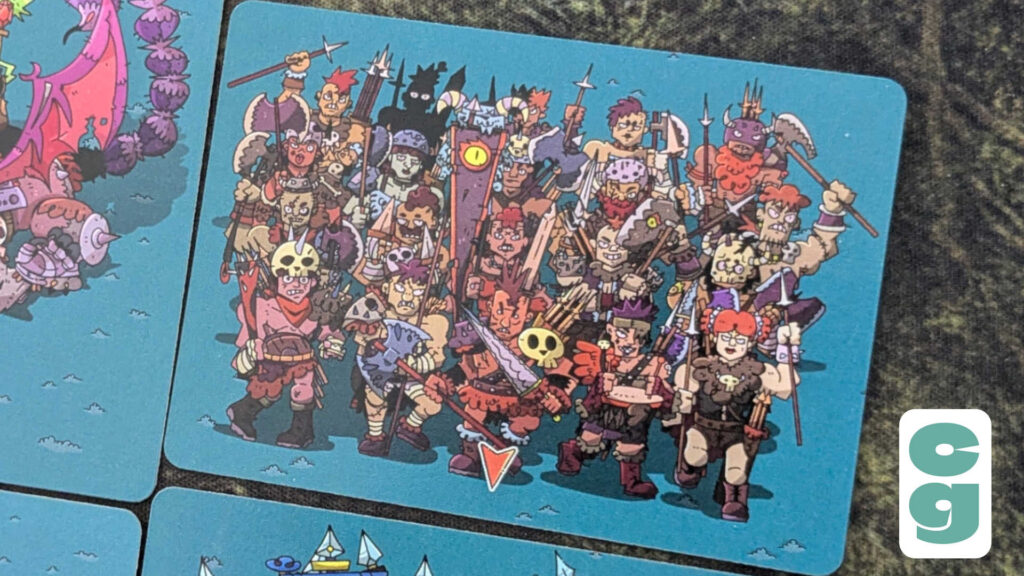
The artwork on the cards has an appealingly cartoony look; I was reminded somewhat of the light-hearted but detailed comic books by Sergio Aragonés, particularly the crowd scenes you often find in an issue of his barbarian fantasy saga, Groo the Wanderer. However, the small figures and cluttered illustrations can cause a bit of confusion as to which unit is which at a distance; some form of identifying mark or name on the card would alleviate this, but this would be at the cost of the unit’s overall aesthetic.
It’s worth noting that the copy of Warfront I’ve used to review the game is a prototype, which features just a small selection of units from only two factions, and as such there are features, and many units, that I’ve not had the chance to see in action. There are numerous refinements on the way in terms of information available in-game on cards, and with other elements of the game too, so it’ll be a much more user-friendly experience, with more units and factions to choose from, by the time the full version is available.
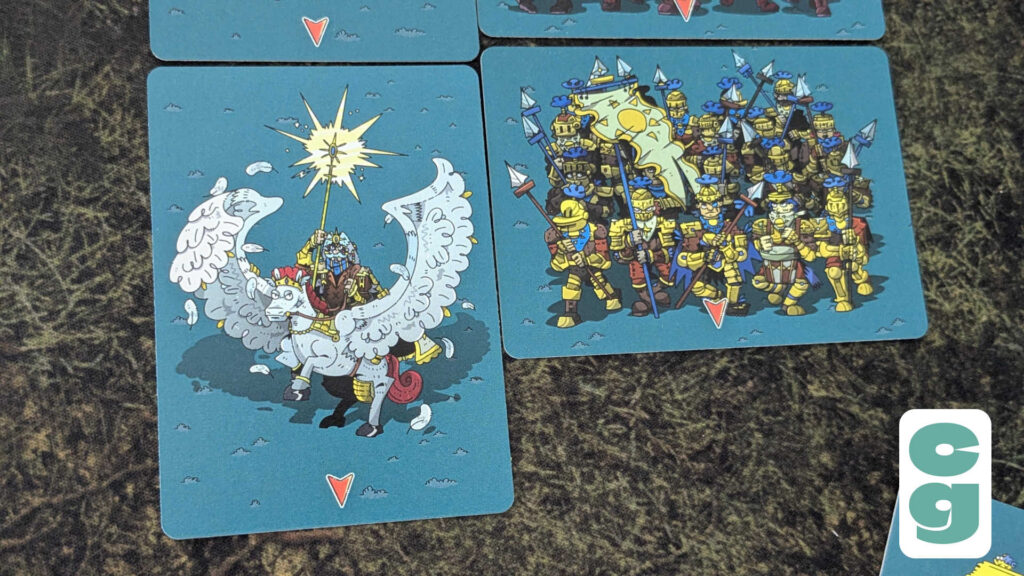
As it is, Warfront is a pretty impressive game system, given that it’s near enough pocket sized, and yet plays not unlike a full sized miniatures game. If you’ve wanted to try your hand at wargaming, but cost, space and time have been a problem (let alone the thought of getting to grips with what can be very dense rulesets), Warfront addresses all of those issues with aplomb.
The Card Gamer Verdict
Here’s where I’d normally have a box with a summary and ratings, to give you a condensed version of my conclusion from the review. However, given that I’ve only tested the prototype of Warfront at this stage, it feels unfair to offer criticism of my experience when the full game will likely address the issues I’ve had, as well as add even more refinements and options to the game.
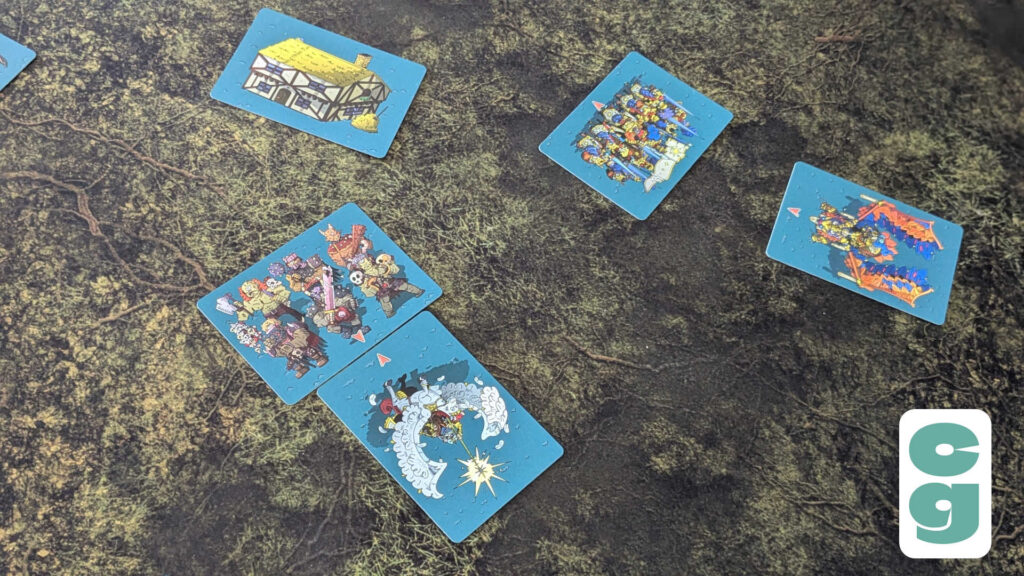
Warfront is an enjoyable experience even in its current state, and it’s well worth checking out if you’re interested in tabletop wargaming; you’ll get the experience of the actual game part of the wargaming hobby, without any of the issues that it can present to the average player. It has a satisfying immediacy and straightforward rules; plus, it’s infinitely expandable too, but of course each new army that the game’s publisher releases won’t be taking up much more space than a deck of cards!
Of course, that is at the cost of the game not being as pleasingly tactile or customizable as a painted army of miniatures fighting over three dimensional terrain, but thankfully the mechanics of Warfront do give it a pace and structure that allows for fast learning, setup and play, and it won’t break the bank either.
Warfront’s first edition, which includes new factions beyond the two I’ve tested, is now crowdfunding on Kickstarter. You can check out the campaign and pledge for your own copy of the game, with various options for sets on offer, at the Warfront Kickstarter page. It’s incredibly affordable even at the higher tiers, and Warfront’s Kickstarter campaign was also, impressively, funded successfully in just 15 minutes!
Want to check out other card games with unique mechanics? Take a look at our review of shared deckbuilding game, For a Crown, and our review of River Rats, which uses a standard deck of cards for players to take on devious cybernetic rodents, in co-operative boss battles!


